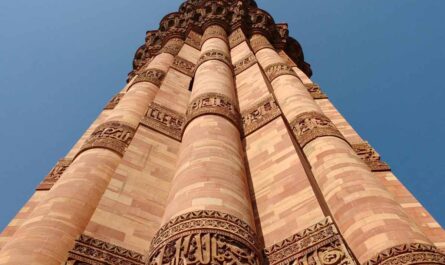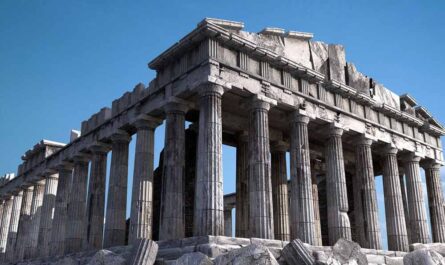The tale of the largest empires in history is a chronicle of grandeur and fragility, a testament to the heights humanity can reach and the depths to which it can descend. From the zenith of imperial ascendance to the nadir of inevitable decline, these empires have carved a narrative that transcends epochs, the list of the largest empires in History, leaving an indelible mark on the collective consciousness of humanity. As we reflect upon their legacies, we are compelled to navigate the present with a nuanced understanding of the past, lest we, too, become threads in the ever-unfolding tapestry of history.
The Grand Tapestry of History’s Largest Empires
Throughout the tapestry of time, the world has borne witness to the ebb and flow of empires, each a chapter in the grand narrative of human civilization. These colossal entities have left an indelible mark on the annals of history, characterized by a kaleidoscope of vigor, uniqueness, traditions, and a symphony of inventions. In this exploration, we embark upon a journey through the epochs, unraveling the tales of prosperity, boom, excellence, and the extraordinary wonders that unfolded within the sprawling realms of these empires. Yet, intertwined with the marvels are the darker threads of surprises, killings, brutality, lechery, and cruelty, offering a nuanced perspective on the colossal forces that shaped the course of humanity.
The Rise: Triumphs and Glories of Imperial Ascendance
The rise of empires is a saga etched in the sands of time, marked by the audacity of ambition and the conquest of vast expanses. As these juggernauts ascended, they brought forth not merely territorial dominance but a mosaic of cultures, each contributing to the empire’s unique identity. The triumphant echoes of victory resonated in the architectural marvels, the bustling markets, and the labyrinthine networks of trade routes that crisscrossed continents. The vibrancy of these empires pulsated through the veins of their societies, fostering a sense of awe and admiration that echoed through the generations.
The Fall: Echoes of Decline and the Unraveling of Greatness
However, no empire stands invincible against the relentless march of time. The fall of empires, like the fading notes of a once majestic symphony, reveals a poignant truth about the impermanence of power. Whether succumbing to internal strife, external invasions, or the inexorable weight of their ambitions, the decline of these behemoths is a testament to the capricious nature of historical forces. The echoes of their decline resonate with lessons for posterity, as empires crumble under the weight of hubris, mismanagement, and the inexorable march of progress.
Cultural Kaleidoscope: Traditions and Wonders Unveiled
Within the sprawling dominions of empires, a rich tapestry of traditions unfolded, weaving a cultural kaleidoscope that spanned the spectrum of human experience. From the opulent courts of emperors to the bustling bazaars where merchants traded exotic goods, each empire carved a unique niche in the annals of cultural history. Architectural wonders, philosophical revelations, and artistic renaissances were the hallmarks of these civilizations, leaving an enduring legacy that transcends the sands of time.
The Dark Underbelly: Shadows of Brutality and Cruelty
Yet, alongside the brilliance of these empires, shadows lurked in the corners, revealing the dark underbelly of power. The corridors of history echo with tales of brutality, lechery, and cruelty that stain the legacy of even the mightiest empires. Whether in the form of tyrannical rulers, ruthless conquests, or the exploitation of the weak, the darker facets of imperial rule cast a somber pall over the grandeur, serving as a stark reminder that power, when unchecked, can unleash the basest instincts of humanity.
Legacy: An Enduring Imprint on the Tapestry of Time
As the empires rose and fell, their legacies endured, imprinted on the ever-evolving fabric of human history. The echoes of their triumphs and tribulations resonate in the cultural, political, and economic landscapes of the present day. The lessons gleaned from the largest empires in history serve as a compass for navigating the complexities of the modern world, offering insights into the cyclical nature of power, the importance of governance, and the fragility of human aspirations in the face of time’s inexorable march.
Top Ten Empires and Their Vast Territorial Dominance
The expansive legacy of empires throughout history is vividly captured in this comprehensive list, delineating their territorial expanse based on the geographical area under their sway. The metric employed in assessing the colossal domains of these empires is the vast stretches of dry land under their dominion. In the event of a contentious estimation, the entries in this list are meticulously organized by the minimal range of estimates, unraveling a nuanced understanding of the sheer enormity of these historical juggernauts.
A Colossus in Historical Dimensions
Upon perusal of this meticulously curated roster of the largest empires in history, the unequivocal behemoth emerges — none other than the British Empire. It assumes the mantle of the most expansive empire ever, its enormity measured not merely by landmass but also by the audacious sprawl of its influence across the vast expanses of oceans. Yet, beneath the overarching umbrella of the British Empire’s dominance, a subtle distinction beckons attention. The title of the largest joint empire is indisputably claimed by the Mongolian Empire, a sprawling Eurasian entity that weaves together a tapestry of territorial control spanning diverse landscapes.
Intricacies Unveiled: The Geographic Tapestry of the Mongolian Empire
Delving into the intricate contours of historical empires, the Mongolian Empire stands out as a titanic colossus, etching its dominance across the expansive canvas of Eurasia. Unlike the British Empire, which boasts supremacy in sheer size, the Mongolian Empire asserts its prominence as the largest joint empire. This distinction finds its roots in the sprawling reach of the Mongolian Empire, seamlessly knitting together diverse regions of the Eurasian landscape. The tapestry of its territorial control extends far beyond contiguous landmasses, entwining cultures, civilizations, and geographies in a singular thread of influence.
Estimation Precision: Sorting Entries by Minimum Range
Navigating the intricacies of historical estimations, a crucial facet of this expansive list lies in its meticulous sorting mechanism. In instances where debates surrounding estimation arise, the entries gracefully yield an analytical order defined by the minimum range of estimates. This discerning approach unveils a nuanced perspective, ensuring that the reader is not only privy to the grandiosity of these empires but also to the inherent uncertainties in historical assessments. Each entry, a testament to the ebb and flow of historical interpretation, is a brushstroke in the vibrant tableau of human civilization.
1. British Empire: The Sun Never Sets on Imperial Supremacy
The British Empire, once touted as the empire on which the sun never set, epitomized unparalleled territorial dominion during its zenith. Its colossal influence spanned across continents, enveloping diverse cultures, regions, and climates under the Union Jack. From the bustling streets of London to the vast expanses of the Indian subcontinent, the British Empire’s dominion reached far and wide, leaving an indelible mark on the annals of history.
Establishing its imperial sway through strategic alliances, colonization, and economic prowess, the British Empire became the epitome of global dominance in the 19th century. The intricate network of colonies, protectorates, and dominions showcased the unprecedented extent of British influence, shaping political, economic, and social landscapes across the globe. The imperial legacy of the British Empire remains a complex tapestry, interwoven with both triumphs and controversies that have resonated through the corridors of time.
2. Mongol Empire: The Conquest of the World’s Largest Land Empire
In the annals of history, the Mongol Empire stands as a testament to the audacity of conquest and the nomadic spirit of the steppes. Originating under the leadership of Genghis Khan in the 13th century, the Mongol Empire rapidly expanded, engulfing the largest land empire the world had ever witnessed. From the sweeping plains of Central Asia to the ancient civilizations of China and the Islamic heartlands, the Mongols left an indomitable imprint on the world map.
The Mongol conquests were marked by unparalleled military strategies, superior horsemanship, and a nomadic resilience that defied conventional notions of empire-building. The empire’s vast expanse, stretching from Eastern Europe to the Korean Peninsula, showcased the nomadic prowess of the Mongols, who successfully bridged diverse cultures and landscapes under their rule. The Mongol Empire’s legacy, a paradox of destruction and unification, continues to evoke awe and fascination, symbolizing the transient nature of imperial power.
3. Russian Empire: The Vast Territorial Reach of the Bear
The Russian Empire, a behemoth that straddled Europe and Asia, emerged as a geopolitical force to be reckoned with in the annals of imperial history. Spanning from the tundra of Siberia to the opulent courts of Saint Petersburg, the Russian Empire’s territorial reach was as diverse as the landscapes it encompassed. Established in the early modern period, Russia’s imperial ambitions mirrored its quest for strategic dominance and access to warm-water ports.
The vastness of the Russian Empire, characterized by its harsh climates and expansive wilderness, posed both challenges and opportunities for imperial rule. The assimilation of diverse ethnic groups, from the Baltic to the Caucasus, highlighted the empire’s commitment to territorial integration. The Russian Empire’s narrative is one of expansion, conflict, and adaptation, mirroring the complexities of managing a vast and diverse expanse that extended across two continents.
4. Spanish Empire: The Sun Setting on Imperial Splendor
The Spanish Empire, a colossus of conquest and exploration, wielded its imperial influence during the Age of Discovery. Rooted in the endeavors of explorers like Christopher Columbus and Ferdinand Magellan, the Spanish Empire spanned the Americas, Asia, and Africa, creating an intricate tapestry of territories under the Castilian crown.
From the glittering treasures of the Aztec and Inca civilizations to the spice-laden ports of the Philippines, the Spanish Empire embraced cultural diversity amid its imperial ambitions. The grandeur of the empire, however, was juxtaposed with the complexities of colonial governance, religious conflicts, and the clash of civilizations. The legacy of the Spanish Empire echoes through the linguistic, cultural, and architectural remnants that endure in the vast swathes of its once sprawling dominion.
5. Qing Dynasty: The Celestial Expanse of Imperial China
The Qing Dynasty, China’s last imperial stronghold, etched its mark on history with a sprawling empire that stretched across East Asia, Central Asia, and the Himalayan foothills. Emerging in the 17th century, the Qing rulers navigated the intricacies of governance, assimilating diverse ethnic groups under the umbrella of Confucian order and celestial authority.
The Qing Empire’s territorial reach extended from the fertile plains of the Yangtze River to the arid expanses of Inner Asia, encompassing the Tibetan Plateau and Mongolia. The imperial court in Beijing radiated influence, and the Qing Dynasty became synonymous with China’s rich cultural heritage. The dynamics of imperial governance, economic prosperity, and the challenges of maintaining unity across vast landscapes defined the saga of the Qing Empire, leaving an enduring impact on the historical narrative of East Asia.
6. Second French Colonial Empire: A Tapestry of Francophone Ambitions
The Second French Colonial Empire, a revival of imperial aspirations in the 19th and early 20th centuries, marked a period of expansion, exploitation, and cultural assimilation. France, driven by economic interests, strategic considerations, and a desire for global prestige, sought to rebuild its colonial portfolio, weaving a narrative that spanned Africa, Southeast Asia, and the Caribbean.
From the bustling streets of Hanoi to the vibrant markets of Algiers, the French tricolor fluttered over a diverse array of territories. The complexities of imperial governance, marked by resistance movements and cultural tensions, unfolded against a backdrop of economic exploitation and geopolitical maneuvering. The Second French Colonial Empire, with its blend of cultural assimilation and colonial exploitation, contributed to the intricate mosaic of global imperial history.
7. Abbasid Caliphate: The Golden Era of Islamic Civilization
The Abbasid Caliphate, heralding the Islamic Golden Age, stands as a testament to the zenith of Islamic civilization. Established in the 8th century, the caliphate’s capital, Baghdad, became a beacon of learning and culture. The House of Wisdom, an intellectual oasis, fostered the translation of ancient texts, preserving and expanding knowledge from Greek, Persian, and Indian sources. The caliphate’s commitment to scholarship, astronomy, medicine, and philosophy propelled it to the forefront of global civilization, leaving an enduring legacy that transcends religious and cultural boundaries.
The expansive trade networks of the Abbasid Caliphate, intertwined with the Silk Road, facilitated the exchange of goods, ideas, and technologies. Baghdad emerged as a cosmopolitan hub, where merchants, scholars, and artisans from diverse cultures converged. This cultural cross-pollination not only enriched the Islamic world but also influenced the broader tapestry of human civilization. The Abbasid Caliphate, with its intellectual and economic vibrancy, remains a pivotal chapter in the mosaic of global history.
8. Umayyad Caliphate: Unifying the Islamic World
The Umayyad Caliphate, a precursor to the Abbasids, marked the initial phase of Islamic expansion in the 7th and 8th centuries. Under the leadership of the Umayyad dynasty, the caliphate reached its territorial zenith, encompassing regions from Spain to the Indian subcontinent. The Umayyads forged a centralized Islamic state, unifying diverse regions under a common religious and political authority.
The architectural marvels of the Umayyad Caliphate, epitomized by the Umayyad Mosque in Damascus, showcased a blend of Islamic, Byzantine, and Persian influences. This architectural legacy not only symbolized the caliphate’s grandeur but also left an indelible mark on Islamic art and design. The Umayyad Caliphate, despite facing internal challenges and eventual decline, played a foundational role in shaping the political and cultural contours of the Islamic world.
9. Yuan Dynasty: The Mongol Confluence in China
The Yuan Dynasty, established by Kublai Khan, marked the Mongol conquest of China in the 13th century. The dynasty, an integral part of the vast Mongol Empire, brought together disparate cultures and traditions under a single imperial rule. The Mongol influence in China, evident in administrative practices, art, and cuisine, created a unique fusion of Mongol and Chinese elements.
The Yuan Dynasty’s global significance is underscored by the accounts of Marco Polo, who chronicled the grandeur of Kublai Khan’s court. The dynasty’s openness to foreign trade and cultural exchange facilitated global integration, contributing to the rich tapestry of the Silk Road. The Yuan Dynasty, though short-lived, left an indelible imprint on China’s history, influencing subsequent dynasties and shaping the Middle Kingdom’s engagement with the wider world.
10. Xiongnu Empire: The Nomadic Conquerors of the Steppes
The Xiongnu Empire, a formidable nomadic power that emerged in ancient Central Asia, played a pivotal role in shaping the geopolitical landscape of the Eurasian steppes. Their nomadic lifestyle, characterized by skilled horsemanship and mobile military tactics, allowed the Xiongnu to dominate vast stretches of the Asian plains. Their influence extended from the Korean Peninsula to the borders of the Han Dynasty in China. Motivation – Mind – Success – Thinking – Productivity – Happiness
The interactions between the Xiongnu Empire and the Han Dynasty in China were marked by both conflict and diplomacy. The construction of the Great Wall of China, initiated as a defensive measure against Xiongnu incursions, underscores the strategic significance of the nomadic empire. The Xiongnu’s legacy lies in their ability to challenge sedentary civilizations, leaving an enduring impact on the historical narrative of nomadic empires in Central Asia.

List of largest empires in History
| Empire | Maximum land area | |||
|---|---|---|---|---|
| million km2 | million mi2 | % of world | Year | |
| British Empire | 35.5 | 13.71 | 26.35% | 1920 |
| Mongol Empire | 24.0 | 9.27 | 17.81% | 1270 or 1309 |
| Russian Empire | 22.8 | 8.80 | 16.92% | 1895 |
| Spanish Empire | 13.7 | 5.29 | 10.17% | 1810 |
| Qing dynasty | 12.16
14.7 |
4.70–5.68 | 9.02%–10.91% | 1820 or 1790 |
| Second French colonial empire | 11.5 | 4.44 | 8.53% | 1920 |
| Abbasid Caliphate | 11.1 | 4.29 | 8.24% | 750 |
| Umayyad Caliphate | 11.1 | 4.29 | 8.24% | 720 |
| Yuan dynasty | 11.0
13.72 |
4.25–5.30 | 8.16%–10.18% | 1310 or 1330 |
| Xiongnu Empire | 9.0 | 3.47 | 6.68% | 176 BC |
| Empire of Brazil | 8.337 | 3.22 | 6.19% | 1889 |
| Empire of Japan | 7.4–8.51 | 2.86–3.285 | 5.49%–6.32% | 1938 or 1942 |
| Iberian Union | 7.1 | 2.74 | 5.27% | 1640 |
| Eastern Han dynasty | 6.5 | 2.51 | 4.82% | 100 |
| Ming dynasty | 6.5 | 2.51 | 4.82% | 1450 |
| Rashidun Caliphate | 6.4 | 2.47 | 4.75% | 655 |
| Göktürk Khaganate | 6.0 | 2.32 | 4.45% | 557 |
| Golden Horde Khanate | 6.0 | 2.32 | 4.45% | 1310 |
| Western Han dynasty | 6.0 | 2.32 | 4.45% | 50 BC |
| Achaemenid Empire | 5.5 | 2.12 | 4.08% | 500 BC |
| Second Portuguese Empire | 5.5 | 2.12 | 4.08% | 1820 |
| Tang dynasty | 5.4–10.76 | 2.08–4.15 | 4.01%–7.99% | 715 or 669 |
| Macedonian Empire | 5.2 | 2.01 | 3.86% | 323 BC |
| Ottoman Empire | 5.2 | 2.01 | 3.86% | 1683 |
| Roman Empire | 5.0 | 1.93 | 3.71% | 117 |
| Tibetan Empire | 4.6 | 1.78 | 3.41% | 800 |
| Timurid Empire | 4.4 | 1.70 | 3.27% | 1405 |
| Fatimid Caliphate | 4.1 | 1.58 | 3.04% | 969 |
| Eastern Turkic Khaganate | 4.0 | 1.54 | 2.97% | 624 |
| Hephthalite Empire | 4.0 | 1.54 | 2.97% | 470 |
| Hunnic Empire | 4.0 | 1.54 | 2.97% | 441 |
| Mughal Empire | 4.0 | 1.54 | 2.97% | 1690 |
| Great Seljuq Empire | 3.9 | 1.51 | 2.89% | 1080 |
| Seleucid Empire | 3.9 | 1.51 | 2.89% | 301 BC |
| Italian Empire | 3.798–4.25 | 1.47–1.64 | 2.82%–3.15% | 1938 or 1941 |
| Ilkhanate | 3.75 | 1.45 | 2.78% | 1310 |
| Chagatai Khanate | 3.5 | 1.35 | 2.60% | 1310 or 1350 |
| Sasanian Empire | 3.5 | 1.35 | 2.60% | 550 |
| Western Turkic Khaganate | 3.5 | 1.35 | 2.60% | 630 |
| Western Xiongnu | 3.5 | 1.35 | 2.60% | 20 |
| First French colonial empire | 3.4 | 1.31 | 2.52% | 1670 |
| Ghaznavid Empire | 3.4 | 1.31 | 2.52% | 1029 |
| Maurya Empire | 3.4–5.0 | 1.31–1.93 | 2.52%–3.71% | 261 BC or 250 BC |
| Delhi Sultanate (Tughlaq dynasty) | 3.2 | 1.24 | 2.37% | 1312 |
| German colonial empire | 3.199 | 1.24 | 2.37% | 1912 |
| Song dynasty | 3.1 | 1.20 | 2.30% | 980 |
| Uyghur Khaganate | 3.1 | 1.20 | 2.30% | 800 |
| Western Jin dynasty | 3.1 | 1.20 | 2.30% | 280 |
| Sui dynasty | 3.0 | 1.16 | 2.23% | 589 |
| Samanid Empire | 2.85 | 1.10 | 2.12% | 928 |
| Eastern Jin dynasty | 2.8 | 1.08 | 2.08% | 347 |
| Median Empire | 2.8 | 1.08 | 2.08% | 585 BC |
| Parthian Empire | 2.8 | 1.08 | 2.08% | 0 |
| Rouran Khaganate | 2.8 | 1.08 | 2.08% | 405 |
| Byzantine Empire | 2.7–2.8 | 1.04–1.08 | 2.00%–2.08% | 555 or 450 |
| Indo-Scythian Kingdom | 2.6 | 1.00 | 1.93% | 20 |
| Liao dynasty | 2.6–4.5 | 1.00–1.74 | 1.93%–3.34% | 947 or 1111 |
| Greco-Bactrian Kingdom | 2.5 | 0.97 | 1.86% | 184 BC |
| Later Zhao | 2.5 | 0.97 | 1.86% | 329 |
| Maratha Empire | 2.5 | 0.97 | 1.86% | 1760 |
| Jin dynasty (1115–1234) | 2.3 | 0.89 | 1.71% | 1126 |
| Khwarazmian Empire | 2.3–3.6 | 0.89–1.39 | 1.71%–2.67% | 1210 or 1218 |
| Qin dynasty | 2.3 | 0.89 | 1.71% | 220 BC |
| First French Empire | 2.1 | 0.81 | 1.56% | 1813 |
| Kievan Rus’ | 2.1 | 0.81 | 1.56% | 1000 |
| Mamluk Sultanate | 2.1 | 0.81 | 1.56% | 1300 or 1400 |
| Third Portuguese Empire | 2.1 | 0.81 | 1.56% | 1900 |
| Almohad Caliphate | 2.0–2.3 | 0.77–0.89 | 1.48%–1.71% | 1200 or 1150 |
| Cao Wei | 2.0 | 0.77 | 1.48% | 263 |
| Former Qin | 2.0 | 0.77 | 1.48% | 376 |
| Former Zhao | 2.0 | 0.77 | 1.48% | 316 |
| Inca Empire | 2.0 | 0.77 | 1.48% | 1527 |
| Kushan Empire | 2.0–2.5 | 0.77–0.97 | 1.48%–1.86% | 200 |
| Liu Song dynasty | 2.0 | 0.77 | 1.48% | 450 |
| Northern Wei | 2.0 | 0.77 | 1.48% | 450 |
| Western Roman Empire | 2.0 | 0.77 | 1.48% | 395 |
| Ayyubid dynasty | 1.7–2.0 | 0.66–0.77 | 1.26%–1.48% | 1200 or 1190 |
| Gupta Empire | 1.7–3.5 | 0.66–1.35 | 1.26%–2.60% | 440 or 400 |
| Buyid dynasty | 1.6 | 0.62 | 1.19% | 980 |
| Eastern Wu | 1.5 | 0.58 | 1.11% | 221 |
| Northern Qi | 1.5 | 0.58 | 1.11% | 557 |
| Northern Xiongnu | 1.5 | 0.58 | 1.11% | 60 |
| Northern Zhou | 1.5 | 0.58 | 1.11% | 577 |
| Assyria | 1.4 | 0.54 | 1.04% | 670 BC |
| Eastern Maurya Empire | 1.3 | 0.50 | 0.96% | 210 BC |
| Liang dynasty | 1.3 | 0.50 | 0.96% | 502, 549, or 579 |
| Kingdom of Aksum | 1.25 | 0.48 | 0.93% | 350 |
| Shang dynasty | 1.25 | 0.48 | 0.93% | 1122 BC |
| Francia | 1.2 | 0.46 | 0.89% | 814 |
| Srivijaya | 1.2 | 0.46 | 0.89% | 1200 |
| Indo-Greek Kingdom | 1.1 | 0.42 | 0.82% | 150 BC |
| Mali Empire | 1.1 | 0.42 | 0.82% | 1380 |
| Polish–Lithuanian Commonwealth | 1.1 | 0.42 | 0.82% | 1480 or 1650 |
| Almoravid dynasty | 1.0 | 0.39 | 0.74% | 1120 |
| Empire of Harsha | 1.0 | 0.39 | 0.74% | 625 or 648 |
| Gurjara-Pratihara dynasty | 1.0 | 0.39 | 0.74% | 860 |
| Holy Roman Empire | 1.0 | 0.39 | 0.74% | 1050 |
| Khazar Khanate | 1.0–3.0 | 0.39–1.16 | 0.74%–2.23% | 900 or 850 |
| Khmer Empire | 1.0 | 0.39 | 0.74% | 1290 |
| New Kingdom of Egypt | 1.0 | 0.39 | 0.74% | 1450 BC or 1300 BC |
| Ptolemaic Kingdom | 1.0 | 0.39 | 0.74% | 301 BC |
| Qara Khitai | 1.0–1.5 | 0.39–0.58 | 0.74%–1.11% | 1130 or 1210 |
| Scythia | 1.0 | 0.39 | 0.74% | 400 BC |
| Shu Han | 1.0 | 0.39 | 0.74% | 221 |
| Tahirid dynasty | 1.0 | 0.39 | 0.74% | 800 |
| Western Xia | 1.0 | 0.39 | 0.74% | 1100 |
| First Bulgarian Empire | 0.807 | 0.31 | 0.60% | 927 |
| Akkadian Empire | 0.8 | 0.31 | 0.59% | 2250 BC |
| Avar Khaganate | 0.8 | 0.31 | 0.59% | 600 |
| Chu (state) | 0.8 | 0.31 | 0.59% | 300 BC |
| First Portuguese Empire | 0.8 | 0.31 | 0.59% | 1580 |
| Huns | 0.8 | 0.31 | 0.59% | 287 |
| Songhai Empire | 0.8 | 0.31 | 0.59% | 1550 |
| Hyksos | 0.65 | 0.25 | 0.48% | 1650 BC |
| Twenty-sixth Dynasty of Egypt | 0.65 | 0.25 | 0.48% | 550 BC |
| Austro-Hungarian Empire | 0.62 | 0.24[25] | 0.46% | 1905 |
| Caliphate of Córdoba | 0.6 | 0.23 | 0.45% | 1000 |
| Visigothic Kingdom | 0.6 | 0.23 | 0.45% | 580 |
| Zhou dynasty | 0.55 | 0.21 | 0.41% | 1100 BC |
| Kosala | 0.5 | 0.19 | 0.37% | 543 BC |
| Lydia | 0.5 | 0.19 | 0.37% | 585 BC |
| Magadha | 0.5 | 0.19 | 0.37% | 510 BC |
| Middle Kingdom of Egypt | 0.5 | 0.19 | 0.37% | 1850 BC |
| Neo-Babylonian Empire | 0.5 | 0.19 | 0.37% | 562 BC |
| Satavahana dynasty | 0.5 | 0.19 | 0.37% | 150 |
| Twenty-fifth Dynasty of Egypt | 0.5 | 0.19 | 0.37% | 715 BC |
| Western Satraps | 0.5 | 0.19 | 0.37% | 100 |
| Second Bulgarian Empire | 0.477 | 0.18 | 0.35% | 1241 |
| New Hittite Kingdom | 0.45 | 0.17 | 0.33% | 1250 BC–1220 BC |
| Xia dynasty | 0.45 | 0.17 | 0.33% | 1800 BC |
| Middle Assyrian Empire | 0.4 | 0.15 | 0.30% | 1080 BC |
| Old Kingdom of Egypt | 0.4 | 0.15 | 0.30% | 2400 BC |
| Ancient Carthage | 0.3 | 0.12 | 0.22% | 220 BC |
| Indus Valley Civilisation | 0.3 | 0.12 | 0.22% | 1800 BC |
| Mitanni | 0.3 | 0.12 | 0.22% | 1450 BC–1375 BC |
| First Babylonian Empire | 0.25 | 0.10 | 0.19% | 1690 BC |
| Aztec Empire | 0.22 | 0.08 | 0.16% | 1520 |
| Elamite Empire | 0.2 | 0.08 | 0.15% | 1160 BC |
| Phrygia | 0.2 | 0.08 | 0.15% | 750 BC |
| Second Dynasty of Isin | 0.2 | 0.08 | 0.15% | 1130 BC |
| Urartu | 0.2 | 0.08 | 0.15% | 800 BC |
| Middle Hittite Kingdom | 0.15 | 0.06 | 0.11% | 1450 BC |
| Old Assyrian Empire | 0.15 | 0.06 | 0.11% | 1730 BC |
| Old Hittite Empire | 0.15 | 0.06 | 0.11% | 1530 BC |
| Ashanti Empire | 0.1 | 0.04 | 0.07% | 1872 |
| Larsa | 0.1 | 0.04 | 0.07% | 1750 BC–1700 BC |
| Neo-Sumerian Empire | 0.1 | 0.04 | 0.07% | 2000 BC |
| Lagash | 0.05 | 0.02 | 0.04% | 2400 BC |
| Sumer | 0.05 | 0.02 | 0.04% | 2400 BC |
Source: Wikipedia
More Interesting Articles
- 60 Interesting Facts about Kathmandu City Nepal
- 30 Interesting Facts About the Flag Of Scotland
- 15 Interesting Fun Facts – Everland Theme Park, South Korea
- 75 Awesome Washington DC USA Interesting Fun Facts
- 70 Archipelago Ibiza Spain Interesting Fun Facts Trivia
- 33 Gyeongbokgung Palace South Korea Interesting Fun Facts
- 29 Andaman and Nicobar Islands Interesting Fun Facts
- 40 Irish Saint Patrick’s Day Interesting Fun Facts
- 25 Interesting Fun Facts About Nami Island South Korea
- 89 Wonders of the World One Must See in Lifetime
- Cultural Wonders of the World – A Complete List
- 22 Pashupatinath Temple Nepal Interesting Fun Facts
- List of 54 Greatest Empires in Entire History Timeline
- 100 United Nations Facts – The UN Basic Facts for All
- 100 Plateau of Tibet Facts to Astonish You
- 200 Kazakhstan Fun Facts Everyone Should Know
- 125 Interesting Facts about Hungary You Must Enjoy
- 200 Interesting Facts about Poland for Travelers
- 200 Cool Facts about Germany to Surprise You



